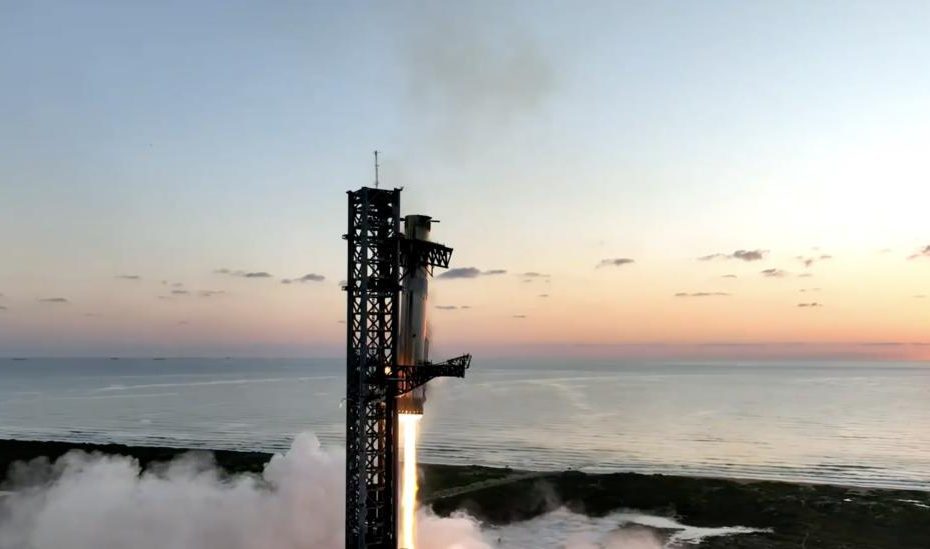SpaceX will conduct the sixth flight test of Starship, the largest rocket ever built, on November 18, following the smooth success of the previous mission less than a month ago.
The high flight cadence is partly due to that success, which included the Super Heavy booster's first-ever return to the launch site – where huge 'chopstick' arms extending from the launch tower grabbed it in the air – and a controlled landing on the target after a suborbital flight of the spacecraft's upper stage in the Indian Ocean. This sixth test covers many of the same objectives; this fact led the Federal Aviation Administration to approve both Flights 5 and 6 simultaneously last month. Until now, SpaceX has had to wait (sometimes months) for regulatory approval before every spacecraft launch.
In a message on its website, SpaceX says it will try to repeat the same successes on November 18, including capturing the booster at the launch site and an accurate splashdown of the spacecraft. The company will also continue testing the heat shield and upper stage reentry maneuvers, “to expand ship and booster capabilities and get closer to bringing the entire system reuse online.” Engineers also introduced a number of upgrades to the system, including more redundancy in the booster propulsion system, updated software controls and other changes.
SpaceX will also attempt to re-orbit one of the ship's six Raptor engines, an important opportunity to eventually reuse the spacecraft's upper stage as well. Engineers will also put this phase to the test in other ways: the company will test new secondary thermal protection materials. Additionally, as the company put it, “The ship will also deliberately fly at a higher angle of attack in the final phase of descent, purposefully emphasizing the limits of flap control to obtain data on future landing profiles.”
All of these tests will culminate in “significant upgrades” to the ship starting with Flight 7, such as redesigned valves, larger fuel tanks and the most up-to-date thermal protection.
A live webcast of the test will begin approximately 30 minutes before the 30-minute launch at 2:00 PM PT, which will be viewable on X or SpaceX's website. This late afternoon launch window (which opens at 4 p.m. local time in Texas) will allow for better viewing conditions upon return, SpaceX said.

